
Published first in Germany and then throughout Europe in 1814, Peter Schlemihl, a novella by Adalbert von Chamisso,1 1 - Adalbert von Chamisso, Peter Schlemihl, trans. H. von Chamisso, rev. by the author; preface by Pierre Péju, “L’ombre et la vitesse” (Paris: José Corti, 1994). was an immediate and spectacular success: no fewer than eighty German editions of the work were available between 1814 and 1919, and the first French version went through thirty-three editions. The book recounts the strange tale of Peter Schlemihl, who gives his shadow away to a suspicious-looking figure bearing a striking resemblance to the devil, in exchange for an inexhaustible fortune. But to be without a shadow is not to be free of torment: Schlemihl is cut off from others by this singular absence, this unparalleled solitude that only deepens, and is forced to go out only at night to prevent others from seeing what has quickly become an infirmity — indeed, a flaw and a curse. The tragic embodiment of the misfortune of the lost shadow, a sort of inexorable dehumanization that lies in wait for the person who leaves nothing behind in his wake, Schlemihl has impressed, if not fascinated, numerous readers over many years.
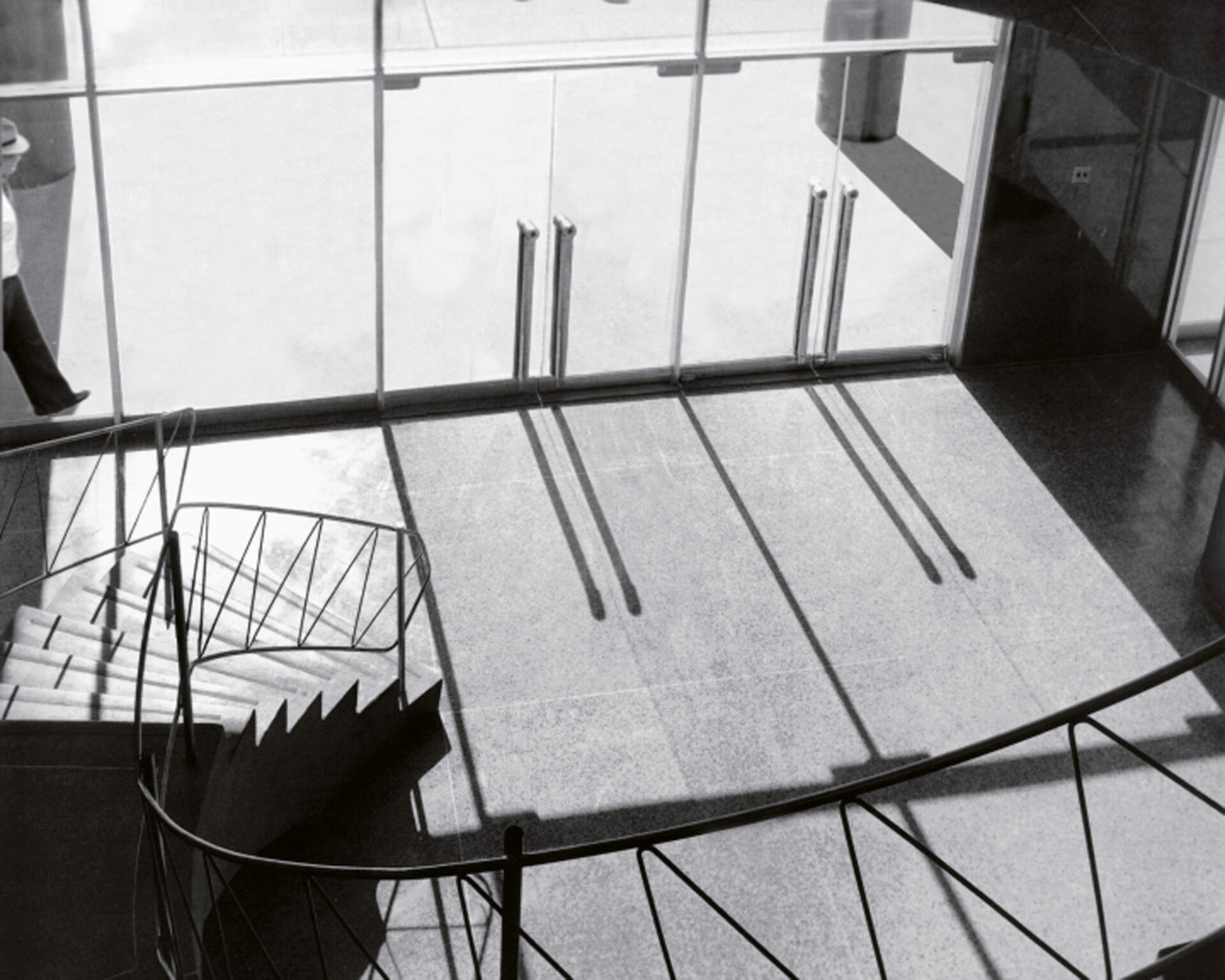
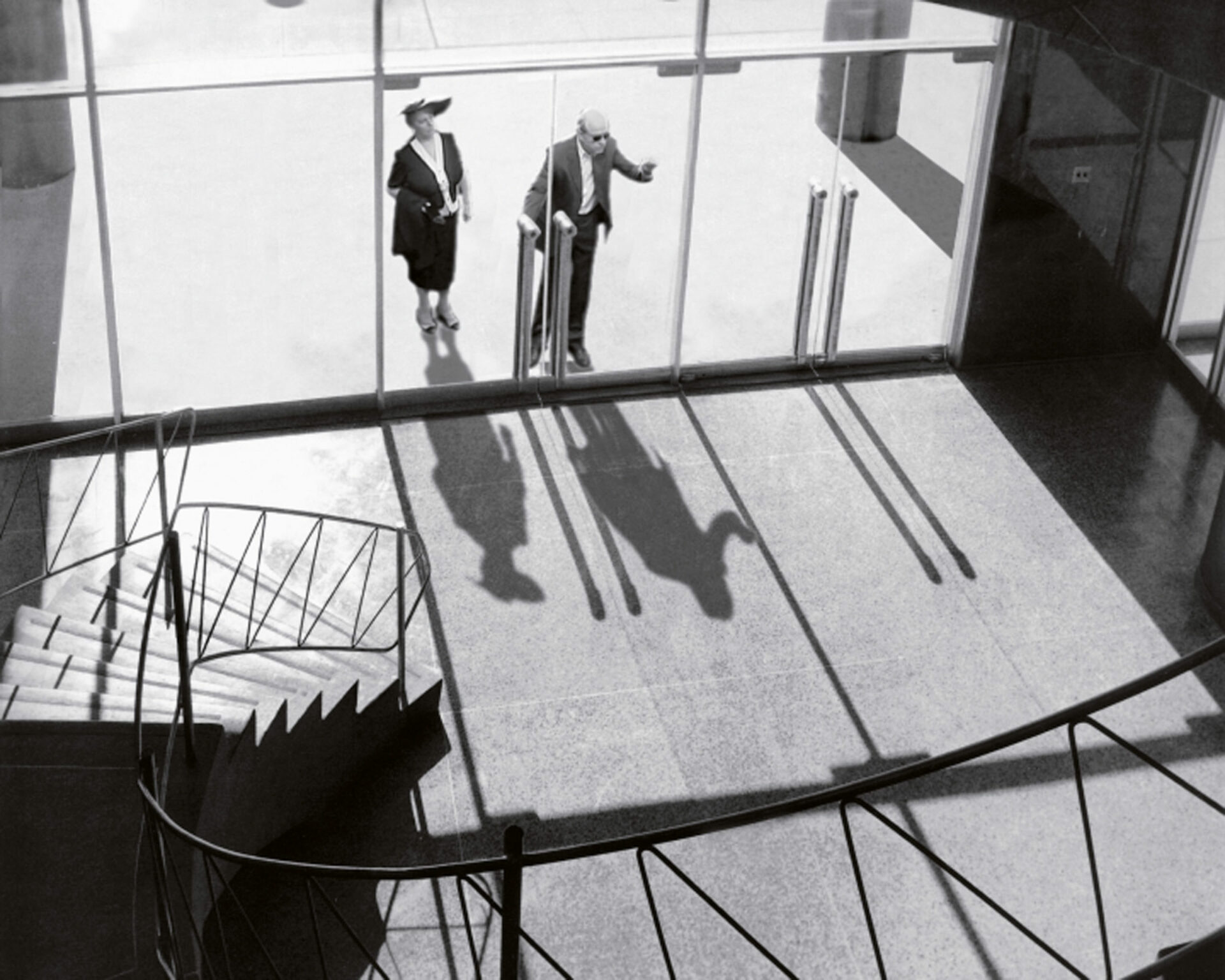
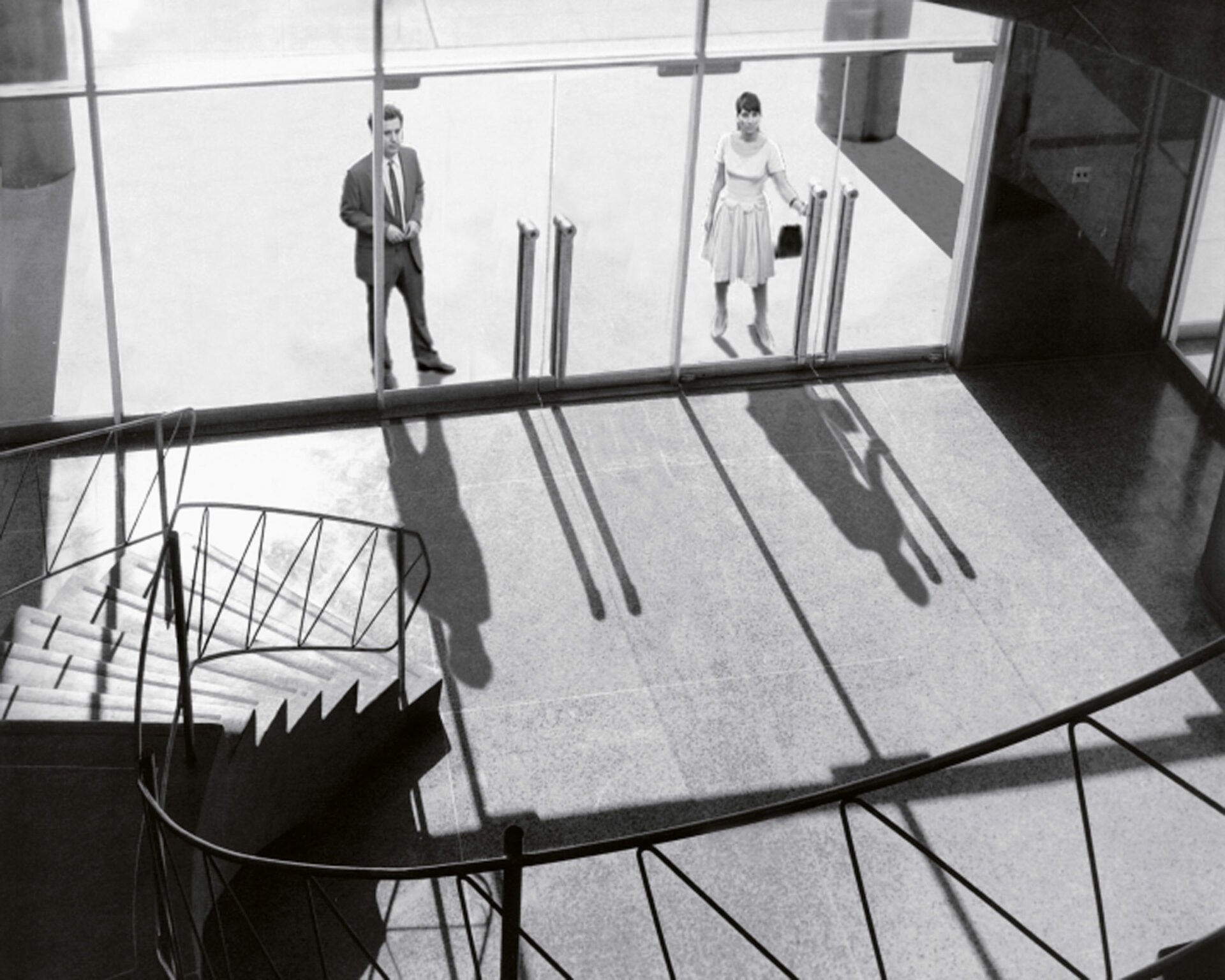
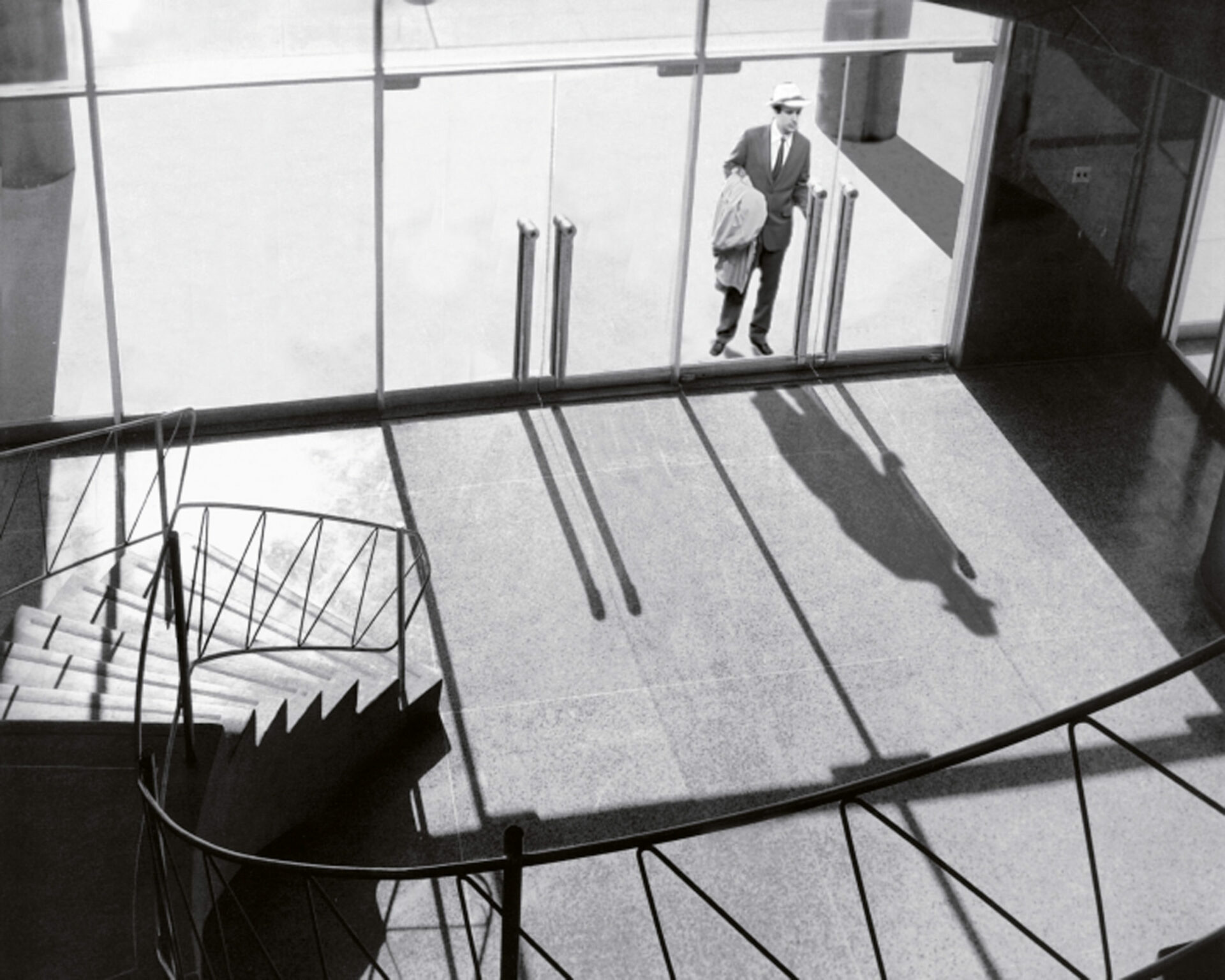
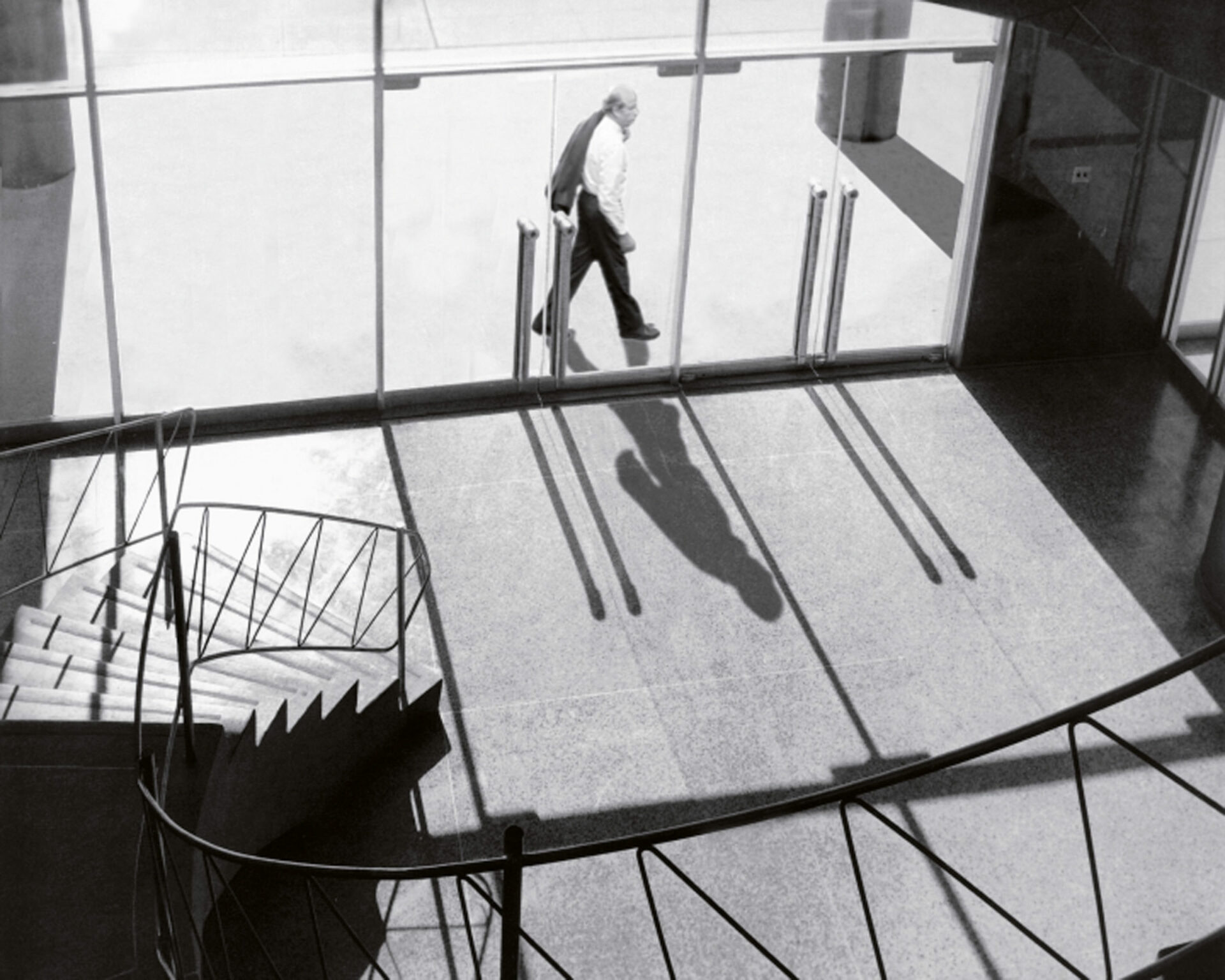
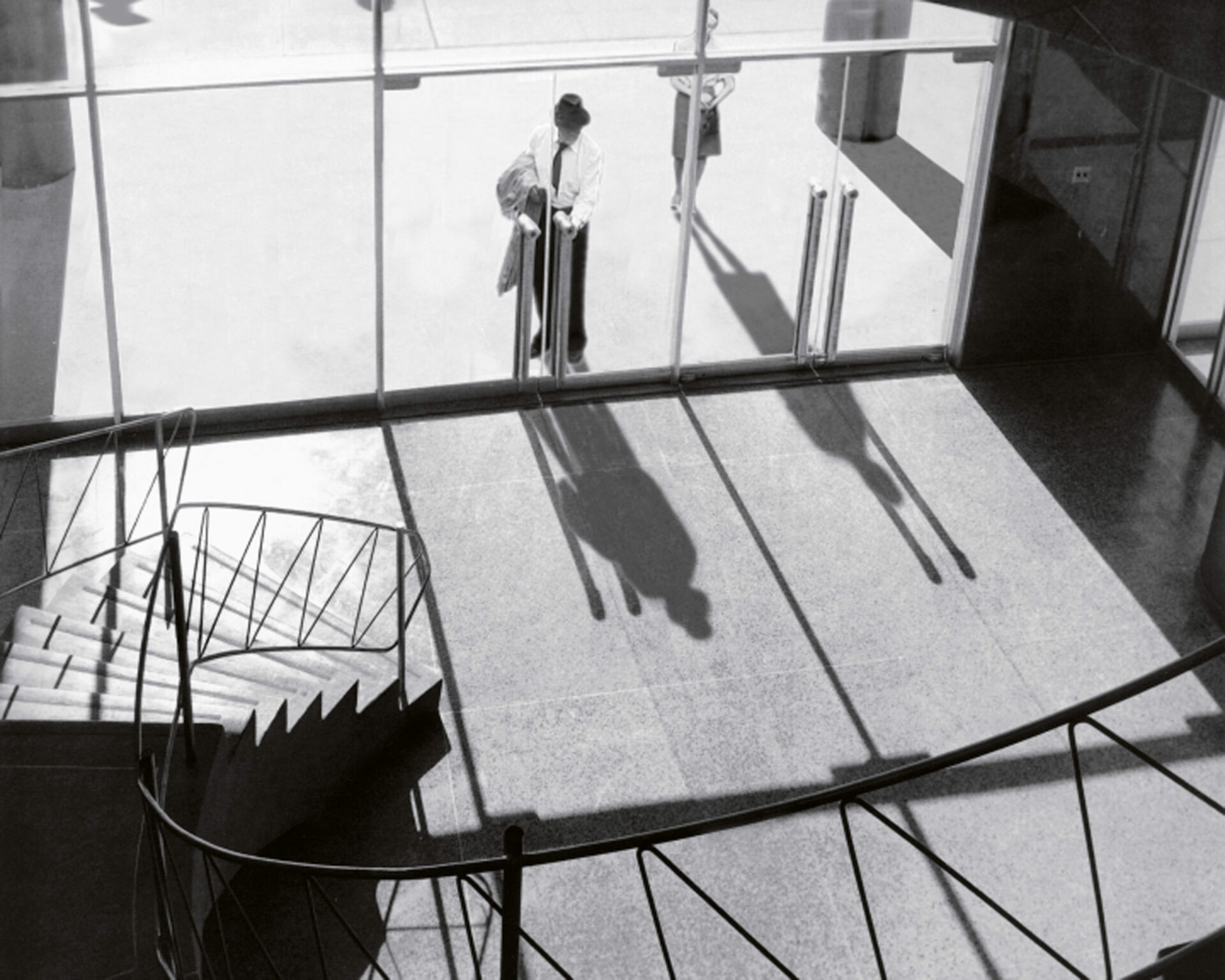

Photos : permission de | courtesy of the artist and galleries Yvon Lambert, Micheline Szwajcer, Johnen Galerie, and Rüdiger Schöttle
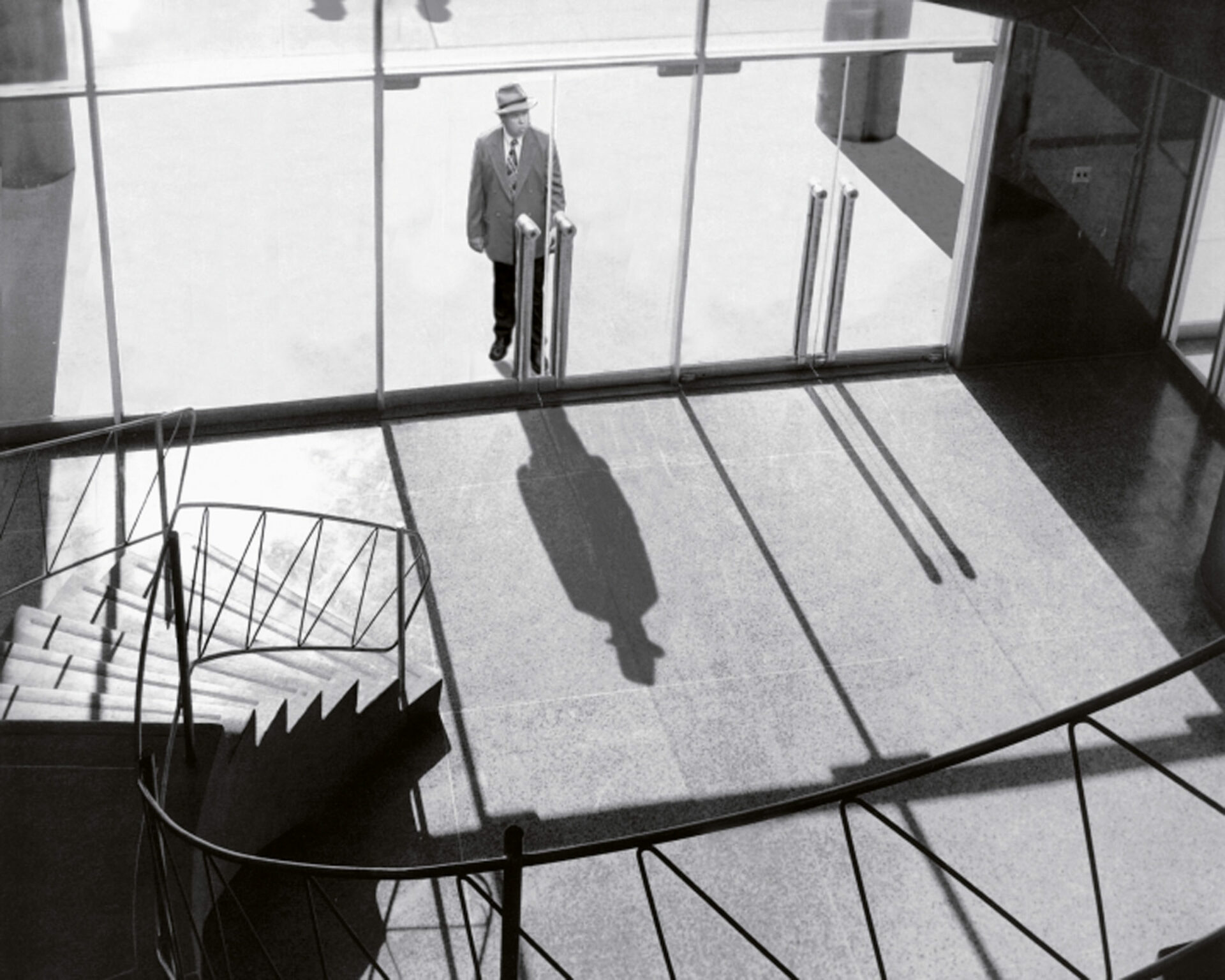

Such an affliction could never strike the figures that populate the works of Belgian artist David Claerbout because of one remarkably constant feature that is clearly visible in all of his films: the absolute solidarity that exists between the bodies of his subjects and the shadows that they cast. It is as if each could connect only under the aegis of their joint appearance, their simultaneous presence and indissociable existence, luminous and nocturnal at the same time. A 2005 work with the programmatic title Shadow Piece directly foregrounds this condition. The impetus for this thirty-minute black-and-white video was an archival photograph that Claerbout chanced upon; it was taken from an interior stairway of a building that could conceivably serve as an exemplar for the kind of glass architecture extolled by Paul Scheerbart.2 2 - Paul Scheerbart, L’Architecture de verre, trans. P. Galissaire, preface by Daniel Payot, “La sobriété ‘barbare’ de Paul Scheerbart” (Paris: Circé, 1995). The film shows the building entrance closed off by a series of glass doors. Various people walk up to this transparent barrier and take turns trying to open the doors, but to no avail. A light source located behind them casts their shadows inside. These shadows are the only form and, ultimately, the only shadowy matter capable of penetrating what amounts to a transparent box. The figures who file by owe whatever presence and singularity they possess to these grey puddles, which serve as fluid and impalpable signatures that are nonetheless real and material enough to pierce the borders of the space. While the upper section of the video image plays host to the continuous movement of the figures, who seem straight out of some 1950s American film noir, the lower half is static and strictly photographic in nature. We can begin viewing this work at any point, walk away from it at any time, and come back to it whenever we feel like it — none of this makes the slightest difference because, like many of Claerbout’s works, it has no beginning or end. It is a purely visual and temporal experience that shows a scene, but has no story or narrative. What does this “shadow play”3 3 - Translator’s note: The French word pièce can also mean “play,” and the author avails himself of this dual meaning to expand on the ramifications of the title. say to us, what does it show? Mainly, it confirms that these figures’ identities are inseparable from the active presence of their flat, dark projections in space, that no living creature filmed by the artist — and this applies also to those of his own invention — can dispense with the visible and spectral trace of its dark double. Consequently, the character of Peter Schlemihl appears more incongruous and impossible here than in reality itself: the shadow participates fully and without exception in whatever makes the subject a subject and the body a body, and this includes those moments when the scene in which the subject appears is wholly invented. It makes human beings fully and wholly present in the image, imbues that image with the weight of material reality, and sets the parameters within which its duration as a work of art is manifested.
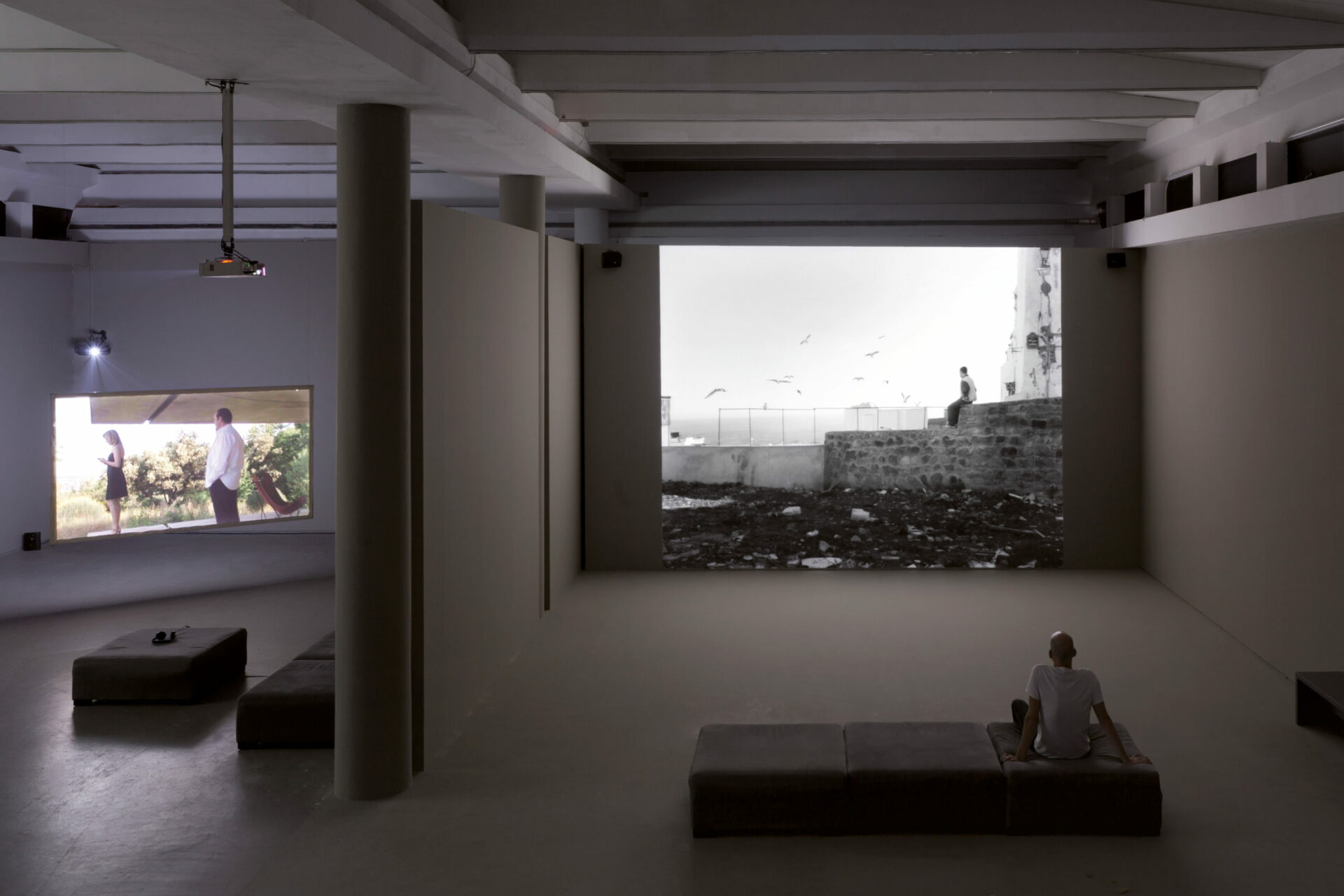
vue d’installation | installation view, Tel Aviv Museum of Art, Tel Aviv, 2012.
Photo : Elad Sarig
permission de | courtesy of the artist and galleries Yvon Lambert,
Micheline Szwajcer, Johnen Galerie, and Rüdiger Schöttle
Hence, many of the central figures in Claerbout’s works are shadowy and, indeed, almost nocturnal. Rocking Chair (2003), for example, shows a woman dozing in a rocking chair on a large screen; she appears cloaked in the shadow of a pergola that masks the upper part of her face. Seen from the other side of the screen, from behind, her shadow casts a grey shape onto the floor space of the staged landscape visible around her outline. In Sections of a Happy Moment (2007), the six characters (two children and four adults) who make up the scene, which is shot more in tones of grey than in black and white, have shadows that follow them faithfully. Study for a Portrait (Violetta) (2001) gives us a filmed bust of a woman whose face is sculpted by shadows cast by a light coming from the right side of the image. In Kindergarten Antonio Sant’Elia, 1932 (1998), the children playing in their school’s garden see elongated shadows of themselves on ground bathed in a cold, almost crepuscular light. And in Bordeaux Piece (2004), a film that runs for nearly fourteen hours, the shadows of three characters follow the actions of a scene that is played out repeatedly throughout a single day, from dawn to dusk. The work is composed, in effect, of many sequences that were shot using the same actors, who worked with an unchanging script. The sequences take place either inside or outside a house at different times of the day; the actors’ shadows follow the sun’s trajectory somewhat in the manner of hands marking time on a sundial. The artist has said, “The real point of Bordeaux Piece . . . is to give a form to duration using natural light.”4 4 - Marie Muracciole, “Le bruit des images: Conversation avec David Claerbout,” Les Cahiers du Musée national d’art moderne, no. 94 (Winter 2005/2006), 126 (our translation). The consistently reaffirmed connection between the body and its shadow projection is therefore one of the means that Claerbout uses to give his films a single overall visual tone, a single look — an identity entirely in a grisaille that could be described as graphic. And it is also what makes his works truly temporal objects, even when time stops and everything seems to happen, as it does in Shadow Piece, in the form of immobile duration. For in this work, as Claerbout himself has said, “Actions succeed one another, although the shadows point to a time that does not pass” — that is there, visually tangible, as if perennially suspended: “It’s a fixed digital composition, an autonomous photographic image. In it, shadows appear like the frozen skeleton of the composition and act in ways that run counter to their status as clues to the passage of time.”5 5 - Ibid., 134 – 35 (our translation). If Pamela M. Lee was able to detect a fear of time in 1960s Western art,6 6 - Pamela M. Lee, Chronophobia: On Time in the Art of the 1960s (Cambridge, MA, and London: MIT Press, 2006). the fullness of shadows in Claerbout’s work is also one of the ways in which he expresses — albeit in a manner different from some of the works produced a few decades earlier by such forebears as Jean Tinguely, Lygia Clark, and Bridget Riley — a passion for time and its visual manifestations, for exhibiting duration, for pure duration visible as such, even when it is immobile, as in Shadow Piece.
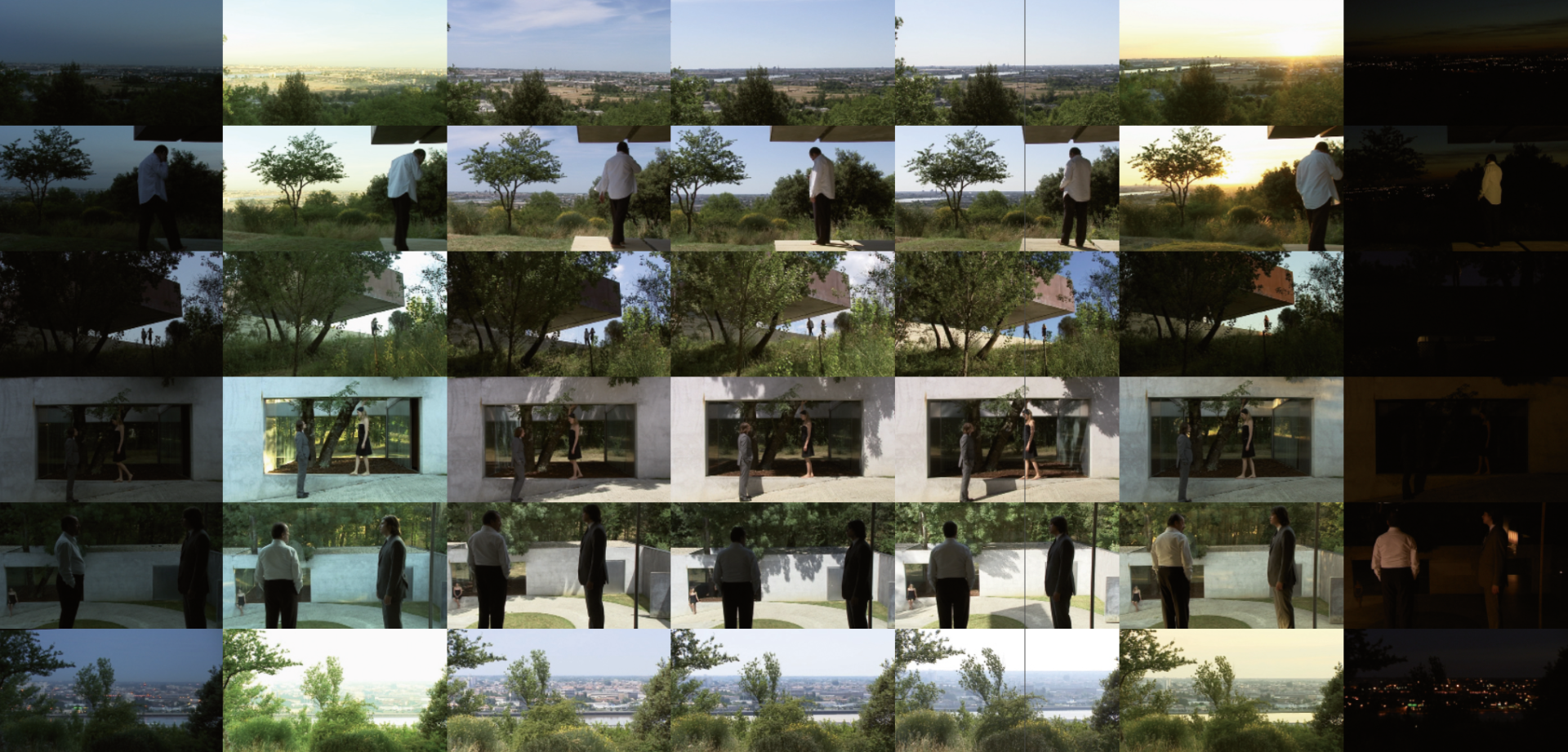
captures vidéo | videostills, 2004.
Photos : permission de | courtesy of the artist and galleries Yvon Lambert,
Micheline Szwajcer, Johnen Galerie, and Rüdiger Schöttle
This “shadow play,” like all shadowy works, harks back to art history and its mythic origins as expounded by Pliny the Elder in the first century CE. In Book XXXV of his celebrated and monumental Natural History, the author located the first appearance of art in a tracing, made by a potter’s daughter, of her departing lover’s profile on a wall. The shadow is therefore a foundational form because, again according to Pliny, it set the stage for the appearance of both painting and sculpture, which would also emerge via projections. But the shadow is also foundational because it is a de facto product of all bodies, something they carry with them from the first moment of their existence. It is, as it were, a double that is consubstantial with the body’s singularity, one that we cannot dispense with — with all due respect to Adalbert von Chamisso. In short, the shadow is the original point on the timeline of art history and, phenomenologically speaking, a foundational form when viewed from the standpoint of the laws governing its appearance, the laws of visibility. It is an archaic form — in other words, a first principle — so long as we can hear in “archaic” the Greek term arche, its etymological root, which signifies “principle” or, more precisely — if we take Aristotle’s definition of it in Metaphysics literally — that which gives rise to and orders, that is, determines. To put a shadow into an image is therefore, in a certain way and up to a certain point, to make it archaic, to give it the character of an origin and first principle. It amounts to rendering it as inherently and archaeologically charged, endowed with an ancient and active (as well as activated) memory. And even though Claerbout uses digital technology, this does not prevent his work from being permeated by forms that make the image anachronistic after its own fashion.
One must, moreover, restore Shadow Piece to the historical continuum of twentieth- and twenty-first-century Western art. From Duchamp to Kara Walker, by way of Christian Boltanski and Hans-Peter Feldmann, the shadow plays a key role in this chronology and has undoubtedly proven its ability to double — in planar terms — the volumes of beings and objects, and to exert, whatever the epoch, a permanent influence on the mind and the gaze. It is well known, for example, that Duchamp created works that featured shadows: in Tu m’, the last of his conventional paintings (executed in 1918 for the library of Katherine Dreier), one can observe several shadows of readymades (the Bicycle Wheel and the Hat Rack) in conjunction with that of an enigmatic corkscrew. A photograph of these readymades taken in his New York studio also shows their shadows, which are an integral part of their identity, whereas his Self-Portrait in Profile (1958) consists of his silhouette on a sheet of paper, like the tracing of a shadow directly out of Pliny’s Natural History. Duchamp conferred a certain status on these shadows: to him, they partook of what he called the “infrathin” because the artist is like those “shadow bearers . . . who work within the infrathin.”7 7 - Marcel Duchamp, Notes, foreword by Paul Matisse, preface by Pontus Hulten (Paris: Flammarion, 1999), 24 (our translation). On the subject of the infrathin, I shall take the liberty of referring the reader to my book De l’inframince: Brève histoire de l’imperceptible de Marcel Duchamp à nos jours (Paris: Regard, 2010). In other words, these projected forms are another possible name for the barely perceptible, with the infrathin announcing whatever has just appeared — the imperceptibility of phenomena, or the imperceptible in phenomena. Shadows are therefore closer to the invisible than they are to clear manifestations. The shadow worlds of Boltanski and Feldmann are, on the other hand, completely different: in their works we are dealing with authentic shadow theatres that accompany the lives of objects and tangible forms. See, for example, Boltanski’s Shadow Theatre (1984 – 97) and Feldmann’s installation Play of Shadows, shown at the 1999 Venice Biennale. Here, grisaille configurations projected on walls heighten reality and give it even greater scope, making it spectacular and monumental in order to render it by turns fantastic and troubling. Claerbout’s work is akin neither to infrathin manifestations of shadowy phenomena nor to their theatralization. Rather, the artist explores a kind of temporal deviation that is borne by the shadow and that goes hand in hand with the sort of graphic materiality granted to it: the shadow is a concrete form of time, precisely drawn and projected, and Shadow Piece owes its visual impact to an immobile procession of shadows that takes time, taking time along with it.
This “shadow play” also informs us that the work consists of an alliance, on the same surface or screen, of movement and immobility, of movement as immobility. And it does so in two ways. The first has to do with the technical construction of the film itself. As stated earlier, the upper section of Shadow Piece is mobile: characters and their shadows file by repeatedly and attempt to open the glass doors; they have been digitally placed inside a photographic depiction of modernist architecture. Meanwhile, the lower section of the screen is static and consists simply of the same photograph, but it has not been reworked either through the addition of movement or by being treated cinematically. The result is a type of floating object that absolutely does not resemble either a film or a photograph, and the space between the two is precisely where the life of the image slips in. The second way concerns the immobile time that the artist talks about in relation to the piece, and that is its undeniable substrate: nothing happens in this projection that has no beginning or end, in this film that is static for this very reason yet, nonetheless, continues to contain movement. This non-event places us once again before the pure and simple unfolding of duration, before a display of time’s flux that transcends the anecdotal to take up the entire surface of the screen. In this disappearance of history, of classic narration, a disappearance enacted to make room for an ordinary, undramatic scene, it is the purely real — duration alone, shown for itself alone — that catches the viewer’s eye.
The shadow is consequently anything but the minor form that Roberto Casati sought to make it in his book Découverte de l’ombre.8 8 - Roberto Casati, La Découverte de l’ombre (Paris: Le Livre de Poche, 2003). The shadow is what makes it possible to show how time can be taken away and duration given. In this respect, the shadows that punctuate Claerbout’s work are not those “short shadows” that Walter Benjamin talks about, those shadows that, appearing at noon, “are no more than the sharp, black edges at the feet of things, preparing to retreat silently, unnoticed, into their burrow, into their secret.”9 9 - Walter Benjamin, “Short Shadows.” in Selected Writings, Volume 2: 1927-1934, ed. Michael J. Jennings, Gary Smith; and Howard Eiland; trans. Rodney Livingstone et al. (Cambridge, MA, and London: Belknap Press of Harvard University, 2005), 202. On the contrary, they are forms that stretch at length over the real, are crepuscular shadows that seem capable of drawing the entire world, with everything it contains, animate and inanimate, into their darkness. Claerbout has opted to show this seizure and offering of time using an artistic form that became known, in Europe in the 1990s, as “exhibition cinema.” None of his works have been shown in movie theatres, but exhibition spaces have given them a home. In this artistic effort made with galleries and museums in mind, a different relationship with duration comes into play. For it is in such places that visitors, henceforth transformed into flâneurs, give themselves over to a non-static visibility, to a dynamic and moving encounter with the moving image. And this becomes another way for them to dwell within duration, to take their time.
[Translated from the French by Donald McGrath]
